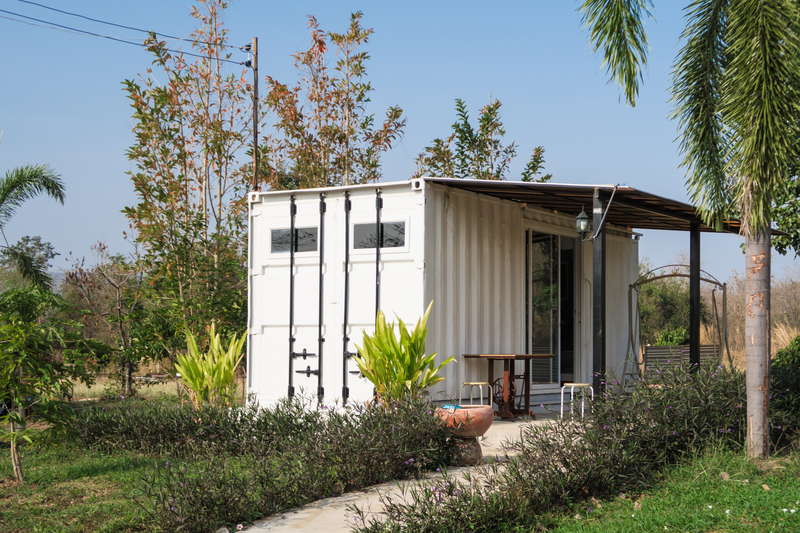The Eco-Conscious Approach to PPE Waste Management
In the wake of global health crises and environmental challenges, personal protective equipment (PPE) waste management has become an issue of utmost importance. The surge in the use of masks, gloves, gowns, and face shields--especially during the COVID-19 pandemic--has put unprecedented pressure on existing waste management systems, threatening both human health and the natural environment.
This comprehensive guide explores sustainable strategies and eco-conscious approaches to PPE waste management, offering practical solutions, innovative technologies, and policy recommendations for businesses, communities, and individuals seeking to minimize the environmental impact of protective gear waste.
Why Eco-Conscious PPE Waste Management Is Essential
PPE, designed as a barrier against infectious agents, has become an environmental hazard when mismanaged. The majority of PPE is made of single-use plastics such as polypropylene, which do not readily degrade and often end up in landfills or oceans, harming wildlife and contributing to microplastic pollution.
- Billions of PPE items are discarded every month worldwide.
- PPE pollution affects aquatic and terrestrial ecosystems, blockages in waste streams, and even threatens public health due to improper disposal.
- Improper PPE disposal exposes waste handlers and the broader community to infectious diseases.
The Environmental Toll of PPE Waste
During the pandemic, global PPE sales soared, leading to an estimated 1.6 million tons of PPE waste every day. The adverse outcomes include:
- Contamination of water bodies by discarded masks and gloves
- Disruption of municipal waste streams
- Increased greenhouse gas emissions from incinerating synthetic PPE products
- *Threats to the health of marine animals*, who may ingest or become entangled in PPE debris

Principles of an Eco-Conscious Approach to PPE Waste Management
The foundation of eco-friendly PPE waste management lies in applying the principles of the waste hierarchy--Reduce, Reuse, Recycle, and Recover. By integrating these into PPE procurement, usage, and disposal processes, we can significantly reduce the environmental footprint.
- Reduction: Opt for reusable PPE and minimize unnecessary use.
- Reuse: Where safe, disinfect and reuse PPE.
- Recycling: Establish or participate in recycling programs for PPE waste.
- Recovery: Explore waste-to-energy technology for PPE that cannot be recycled.
Incorporating Circular Economy Principles
Embracing a circular economy in PPE waste management involves designing products for longevity, facilitating repair and reuse, and ensuring materials remain in circulation rather than ending up as waste.
- Design PPE with recyclable or compostable materials.
- Encourage PPE manufacturers to implement take-back schemes.
- Create partnerships with specialized PPE recycling companies.
Challenges in Sustainable PPE Waste Handling
Despite the urgent need for sustainable solutions, managing PPE waste poses several challenges:
- Risk of contamination requiring specialized handling and processing
- Limited infrastructure for collecting and recycling used PPE
- Lack of awareness about proper disposal methods
- Insufficient regulations or guidelines
Addressing these issues requires coordinated efforts between governments, healthcare facilities, corporations, and individuals.
Eco-Friendly Solutions for PPE Waste Management
1. Source Reduction and Responsible Consumption
The most effective way to manage PPE waste is to generate less of it:
- Educate staff and the public on when PPE use is necessary and appropriate.
- Favor reusable PPE (e.g., washable cloth masks, durable gowns) wherever feasible and safe.
- Work with suppliers offering environmentally preferable PPE options.
2. Safe Reuse and Extended Product Life
Certain types of PPE--like some face shields and goggles--can be disinfected and reused. Key considerations include:
- Ensuring proper sanitization and inspection protocols
- Regularly training personnel in safe reuse practices
- Monitoring product integrity and replacing when necessary
3. Implementing PPE Recycling Programs
One of the most powerful eco-conscious strategies is setting up or participating in dedicated PPE recycling schemes. Advances in recycling technology now make it possible to process items previously considered non-recyclable:
- Collaborate with specialized recycling firms capable of handling contaminated PPE waste.
- Collect single-use masks, gloves, and gowns in designated bins for safe downstream processing.
- Support the development of closed-loop recycling systems for healthcare and industrial facilities.
TerraCycle, for example, offers PPE recycling solutions that convert waste into new products, such as plastic lumber and outdoor furniture.
4. Waste to Energy: Responsible Incineration
For PPE that cannot be recycled, waste-to-energy incineration can safely destroy contaminants while generating power. However, this should be a last resort due to the potential for toxic emissions.
- Install and maintain emissions-control technology in incinerators.
- Regularly monitor environmental impact and strive for cleaner alternatives.
5. Biodegradable & Compostable PPE Innovations
Promising advances are being made in the development of eco-friendly PPE. For example, researchers are designing masks and gowns from biodegradable materials such as polylactic acid (PLA) and bamboo fiber, which can break down safely in the environment.
- Support companies innovating sustainable PPE materials.
- Advocate for regulations encouraging the use of compostable PPE in non-medical settings.
The Role of Organizations and Individuals in Eco-Conscious PPE Waste Management
What Can Businesses and Healthcare Institutions Do?
- Audit current PPE use and disposal practices to identify areas for improvement.
- Educate employees and patients about proper PPE waste disposal methods.
- Establish clearly marked collection points for used PPE throughout facilities.
- Partner with eco-friendly waste management companies and recycling providers.
- Track and report on PPE waste volumes and progress toward waste reduction goals.
Community and Individual Actions
Every person can have an impact by adopting conscious habits:
- Opt for reusable, washable masks in appropriate settings.
- Always dispose of used PPE in appropriate bins--never litter.
- Participate in local PPE recycling programs if available.
- Advocate for better municipal PPE waste management and support local green initiatives.
The Importance of Policy in Sustainable PPE Waste Management
Regulatory Approaches to PPE and Environmental Protection
- Mandate standards for safe disposal of contaminated PPE in public and private sectors.
- Provide incentives for companies to manufacture and procure sustainable PPE options.
- Fund research into eco-friendly PPE innovation and recycling technology.
- Promote collaborative partnerships between health, environment, and waste agencies.
Well-designed policy frameworks ensure that *eco-conscious PPE waste management* is implemented systematically rather than on an ad-hoc basis.
Case Studies: Success Stories in Eco-Conscious PPE Waste Management
Hospitals Going Green
Several hospitals around the world have pioneered effective PPE recycling and waste reduction initiatives. For instance:
- Mount Sinai Hospital in New York introduced glove recycling programs, diverting hundreds of tons of waste from landfills each year.
- In the UK, the National Health Service (NHS) piloted projects to turn used PPE into building materials.
Corporate Innovations
Companies like Clean Planet Energy are processing PPE waste into renewable fuels, showing how business can drive both profitability and sustainability.
The Future of Eco-Friendly PPE Waste Management
As awareness grows, the future of eco-conscious PPE waste solutions lies in innovation and collaboration. Key trends to watch include:
- Advanced material science, leading to easily compostable or recyclable PPE products
- Expansion of closed-loop recycling systems in healthcare and industry
- Community-driven take-back schemes for used PPE
- Increased government and corporate investment in sustainable waste management infrastructure

Conclusion: Toward a Greener Future in PPE Waste Management
The surge in PPE waste represents both a challenge and an opportunity. By embracing sustainable PPE disposal practices, investing in innovative recycling technologies, and supporting policies that prioritize environmental health, businesses, communities, and individuals can make PPE waste management more eco-conscious and effective.
The journey to greener PPE waste disposal requires action at every level--start today by choosing reusable options, disposing of PPE responsibly, and advocating for sustainable solutions in your community and workplace.
Frequently Asked Questions about Eco-Conscious PPE Waste Management
- Can medical PPE be recycled? Specialized programs can recycle certain PPE, but always check local guidelines as not all facilities accept contaminated PPE.
- What is the most eco-friendly PPE option? Reusable, washable PPE made from sustainable materials is the best choice when appropriate for the setting.
- How can I safely dispose of used PPE at home? Place masks and gloves in a sealed bag before disposing them in the trash, or use dedicated bins if local recycling or take-back programs exist.
Find Out More
- World Health Organization: Safe management of wastes from health-care activities
- US EPA: Coronavirus and Waste
- TerraCycle's PPE Recycling Program
Adopting an eco-conscious approach to PPE waste management is not just an environmental necessity--it is a crucial step toward a safer, healthier, and more sustainable future for all.
